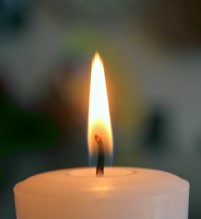Glassware is used a lot in chemistry. It is transparent, so you can watch the reactions happen. It is fairly easy to clean. It resists heating, so you can hold it over a flame to speed up a reaction or distill off a solvent. And it is fairly inexpensive.
Glass is usually made from silica (silicon dioxide, what you probably know as sand or quartz), with some sodium oxide and calcium oxide added, along with some other minor ingredients. This kind of glass is called soda-lime glass, and is easy to melt, and cheap.
Chemists often use borosilicate glass, which is mostly silica with some sodium oxide, aluminum oxide, and boric oxide. It resists heat-shock, and so it is used for heating things. Another type of glass that is good for this is fused silica, which is just pure quartz, heated to very high temperatures until it melts and can be formed. It is expensive because of the high heat required to make it.
Glass can be colored by adding other compounds, such as metal oxides (nickel oxide makes yellows and purples, cobalt oxide gives a rich blue, gold and copper make reds).
Lead glass is like soda-lime glass, but lead oxide is substituted for the calcium oxide and some of the silica. Since lead is so heavy, the resulting glass might be one quarter lead by weight. Adding the lead oxide makes the glass bend light more than other glasses do, which adds sparkle to cut glass and chandelier ornaments. It is sometimes called lead crystal because of the cut shapes, but glass is not a crystal – the molecules in any glass are all in random order, like they are in a liquid.
That disordered state is characteristic of glasses. Silica by itself would tend to crystallize, like a quartz crystal. Adding sodium oxide and calcium or magnesium oxide makes the molecules much more complex, forming networks that are too disordered to crystallize.
